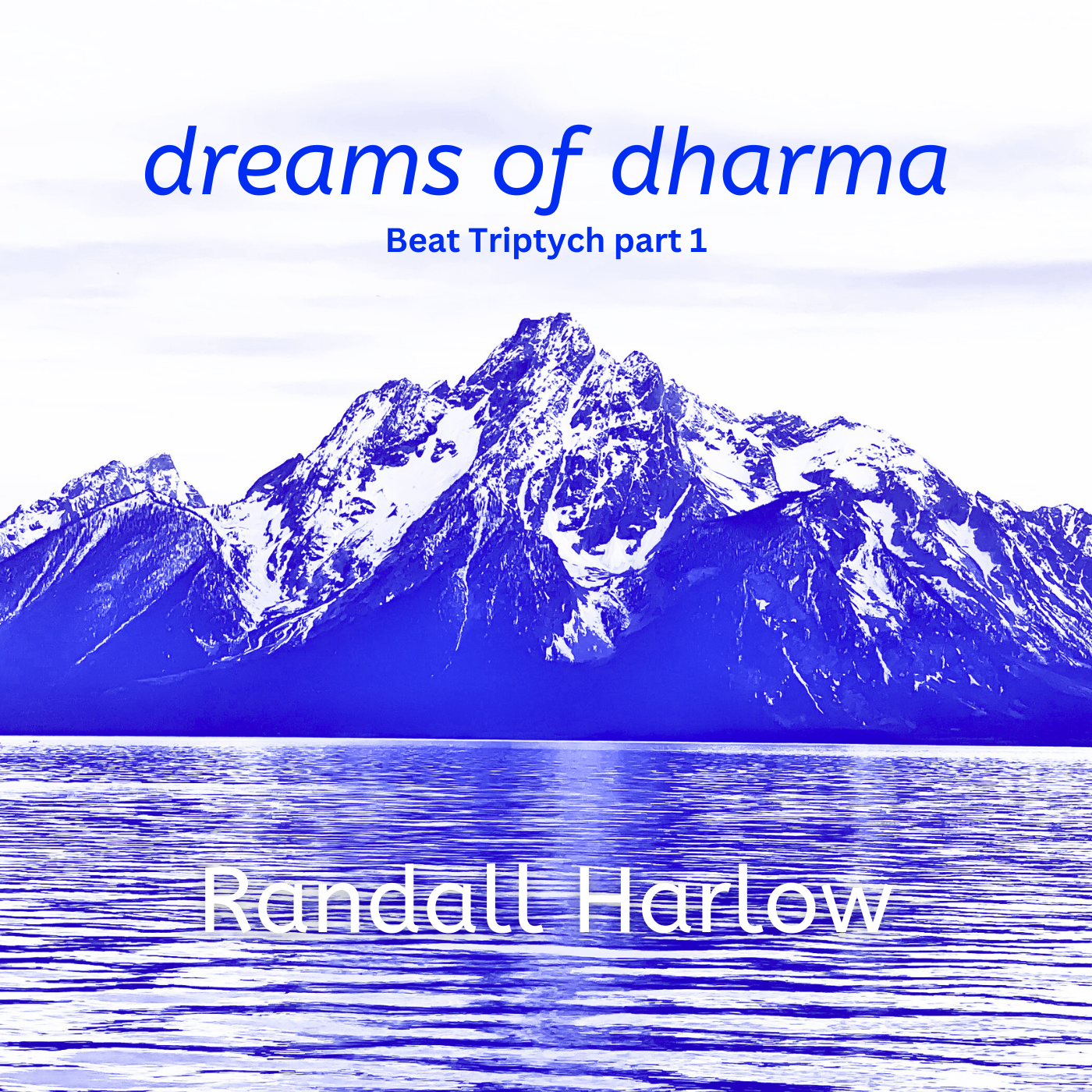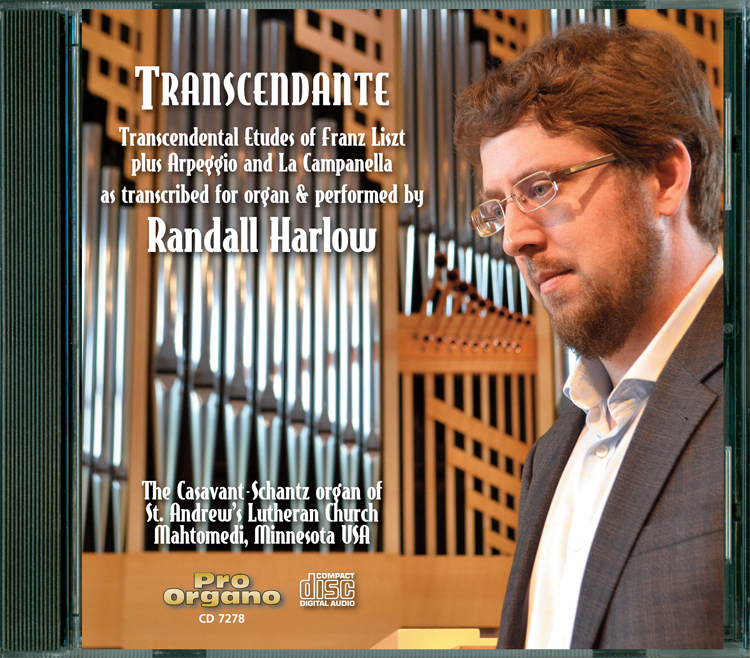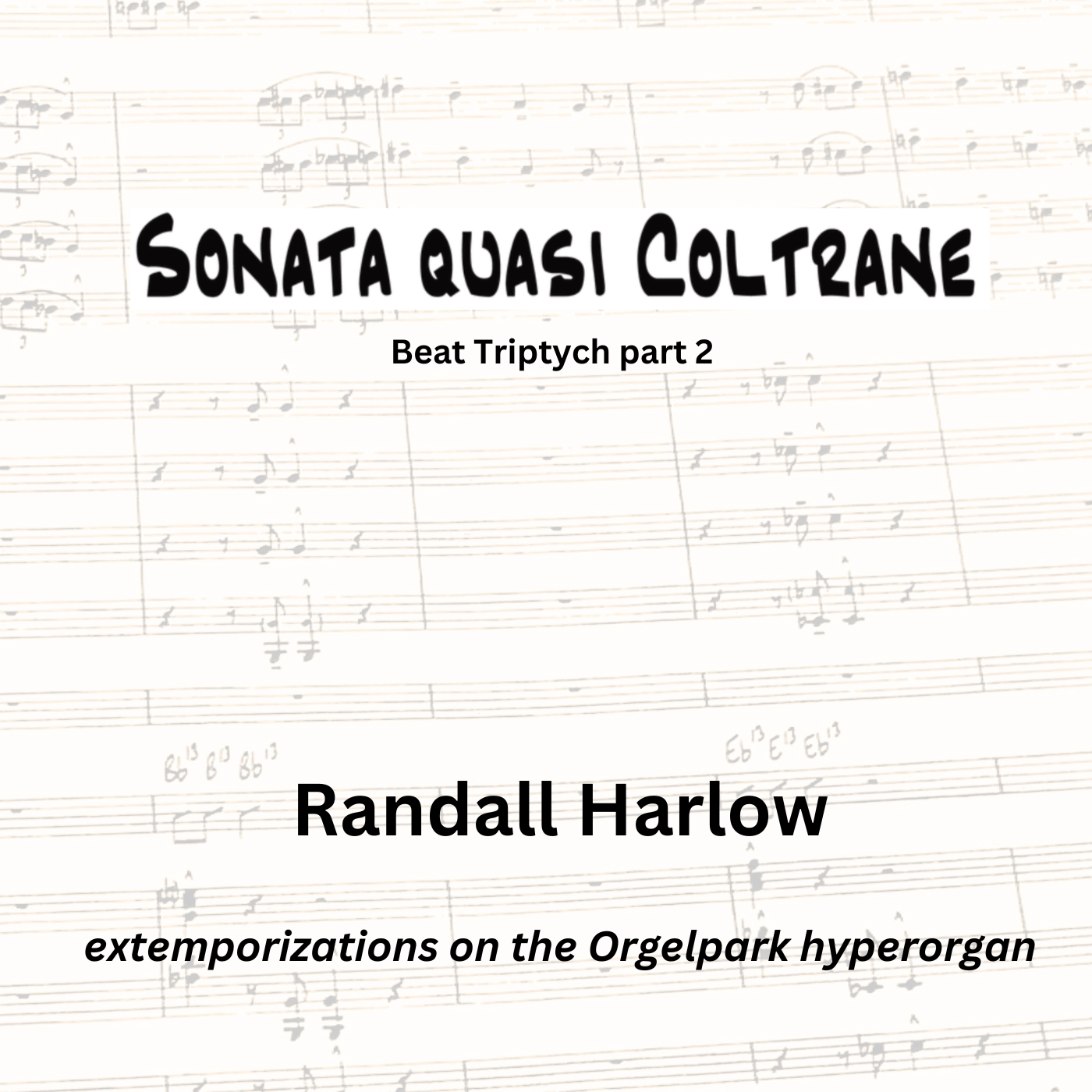

PROJECTS
PROJECTS
Read below about Randall Harlow's Artistic projects
HOLY!
A musical sermon on the beatitudes, part three of the Beat Triptych is an artistic rebuke of the ongoing rise of fascism and the deep moral crisis around us that enables it. Unlike the first two albums in the triptych, HOLY! is repertoire-centered, featuring organ works by William Albright, Henry Brant, Sofia Gubaidulina, Olivier Messiaen, Arvo Pärt, Elliot Sokolov, Jacob TV, and the premiere of the new composition MacDougal Street by Daniel Swilley. Archival recordings of readings by Allen Ginsburg, William S. Burroughs, and Jack Kerouac overlay these performances, weaving them together into a continuous tapestry of words and music that expresses the moral imperatives of compassion, mercy and humility found in Jesus’ sermons on the mount and plain.
HOLY! also celebrates the 25th anniversary of the Helmuth Wolff organ and the artistry of some of my colleagues and students at the University of Northern Iowa.
Sonata Quasi Coltrane
Extemporizations on the Orgelpark Hyperorgan
Recorded on the combined Utopa Baroque Organ and Sauer Organ at the Orgelpark in Amsterdam, in this album I utilize the cutting-edge Sinua organ action and interface system to explore this hyperorgan’s unique affordances of expressive key touch for controlling spectral dynamics and distortion. This album’s approach to extemporization is modeled after the artistic and collaborative processes of John Coltrane and his quartet, from his late bebop through modal and free jazz periods.
This album treats Coltrane’s “Giant Steps” as fertile material for an extemporized large-scale sonata form assembled through thematic transformation in the manner of Franz Liszt’s Sonata in B-minor, structured through Coltrane’s varied jazz practices and the tonal geometries of the symmetrical nine-tone scale of Giant Steps. The performance aims to exude the chaos of bebop-fueled frenzy followed by profound reflection that permeates stories by Jack Kerouac and other beat writers.
Coming, Fall 2025
dreams of dharma
dreams of dharma represents the first of a triptych of albums inspired by the American beat writers of the 1950s, inspired not only by the literature they produced but by their lived pursuit of spiritual enlightenment, joie de vivre and beatification of those qualities that make us most human.
Taking inspiration from Jack Kerouac’s 1958 novel, The Dharma Bums, 'dreams of dharma' is an hour-long deep-listening extemporization on the Baroque Organ at Cornell University, recorded in a single take after five days of sonic exploration on the instrument. This fully-mechanical organ, built strictly using material techniques of the 17th-century and meticulously voiced by Munetaka Yokota, offers an unsurpassed spectrum of sound possibilities, from whispy wind, gossamer overtones, microtonal pitch bends and interference beats, to glorious pipe tone. I manipulate the stop knobs to limit the wind supply and explore the liminal space between pitch and noise, wind and tone.
Organon Novus
Contemporary Organ Works by American Masters
25 composers, 25 works, 25 years, 1990-2015
The most comprehensive single recording ever produced of contemporary American organ music, ORGANON NOVUS is a three-disc anthology featuring twenty-five works by major American non-organist composers from the past twenty-five years, including twenty world premiere recordings. ORGANON NOVUS was awarded a New Music USA Project grant and a Recording Grant from the Aaron Copland Fund for Music, the first organ recording to be awarded either of these highly coveted national grants. Recorded on the historic E. M. Skinner organ in Rockefeller Chapel at the University of Chicago.
Featuring Matthew Andreini, percussion, and Stephen Burns and Randy Grabowski, trumpet
* World Premiere Recording
Larry Polansky, Sunday Organ Piece for Church *
Shulamit Ran, Hallel *
Erik Santos, Star Rising *
Jonathan Schwabe, New and Improved Dances with trumpet *
Roberto Sierra, Fantasia Cromática *
Augusta Read Thomas, Angel Tears and Earth Prayers with trumpet *
Joan Tower, Ascent
Aaron Travers, Exodus *
Ken Ueno, An Idea of Order *
George Walker, Spires
Christian Wolff, Celesta *
John Zorn, Là-Bas *
Samuel Adler, From Generation to Generation *
Matt Darriau, Diapason Fall *
Michael Daugherty, An Evangelist Drowns
Lukas Foss, War and Peace *
Jennifer Higdon, Meditation from Ceremonies
Tom Johnson, 55 Chords *
David Lang, Ordinary *
Libby Larson, On a Day of Bells *
John Anthony Lennon, Misericordia *
John Liberatore, Memetics *
Alvin Lucier, Sizzles with percussion *
Ursula Mamlok, Festive Sounds *
Nico Muhly, The Revd Mustard His Installation Prelude
TransCendante
Franz Liszt's Transcendental Etudes transcribed for organ
Released March 8, 2017
Available at ProOrgano
Franz Liszt (1811-1886)
Études d'exécution transcendante (1852)
I. Preludio (0:54)
II. Molto vivace (2:51)
III. Paysage (4:35)
IV. Mazeppa (7:22)
V. Feux follets (4:36)
VI. Vision (5:18)
VII. Eroica (4:49)
VIII. Wilde jagd (5:25)
IX. Ricordanza (8:46)
X. Appassionata (4:56)
XI. Harmonies du soir (8:23)
XII. Chasse-neige (5:18)
Grandes études de Paganini (1851)
IV. Arpeggio (2:32)
III. La campanella (5:18) based on the Busoni version
Randall Harlow’s debut album features the world's first complete organ transcription of the legendary Études d'exécution transcendante by Franz Liszt, as well as two transcriptions from Liszt's Grandes études de Paganini, '“La Campanella” and “Arpeggio”
In addition to raising the bar for virtuoso organ technique, the act of transcription and performance of these fundamentally non-organ-like, idiomatic piano pieces functioned as an Artistic Research project exploring new gestures and figurations for achieving complex sonic textures on the organ—transcending, so to speak, historic conventions of organ playing and notation. Recorded on the historic 1927 Casavant organ at St. Andrew's Lutheran Church in Mahtomedi, Minnesota.
The scores for these transcriptions are available under Transcriptions above.









